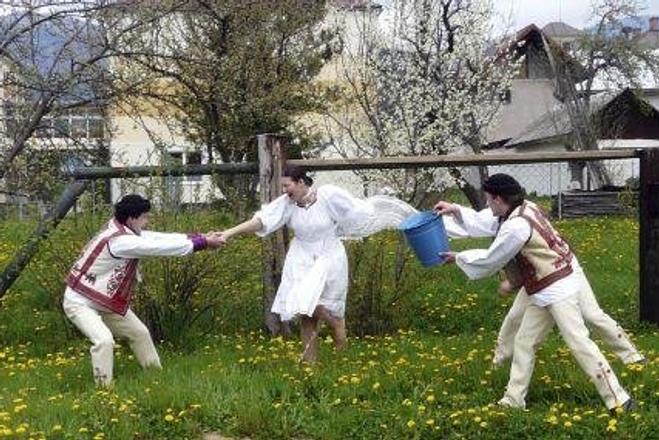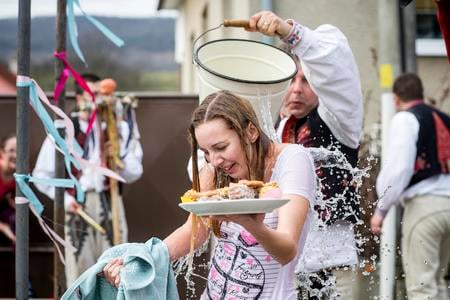Christian Easter ceremonies are interwoven with various traditions that have roots in the distant past and are usually linked to a way of life.
The Slovaks’ ancestors, for example, believed that the important dates during the year, like the summer and winter solstice, open the boundaries between the world of the living and the dead. This means that Paradise and Hell open up before Easter and the souls of the dead can dwell with their relatives until Pentecost, explained Tatiana Bužeková, ethnologist from the Faculty of Arts of Comenius University in Bratislava.
“One of the Slavic traditions was to visit graves during Easter and eat with the dead, while leaving decorated eggs and food on the graves,” Bužeková said.
People also believed that if somebody died at Easter, they would go directly to Paradise which is open at this time of the year. Another tradition says that people took small children to church on Palm Sunday in order for them to start speaking earlier.
The powers of the spirits
It was also said that supernatural powers were strongest during the Easter week, so people had to protect themselves. People believed that witches would meet during the night between Maundy Thursday and Good Friday at certain sites of a village, where they not only danced, but also practised witchcraft, took milk away from cows and damaged fruit trees.
For protection, people coated their doors with garlic, whipped their cattle with consecrated willow twigs and tied red ribbons to their cows’ horns.
As it was also believed that witches and bad spirits are afraid of noise, they would scare them with rattles, Bužeková said.
Among the most distinctive signs of Easter are greens and water, which is linked with fertility and health. Willow twigs, consecrated on Palm Sunday, were considered sacred objects across Slovakia. They were used not only as protection against bad spirits and storms, but also for healing, the ethnologist added.
Some traditions survive to this day
Easter traditions were also different in various regions across the country.
“In western Slovakia, they would beat women with a whip made from woven willow twigs to secure growth, health and power,” Bužeková said. “In central and eastern Slovakia, young men splashed girls with water. In south-western Slovakia both methods were used, and in some villages girls whipped and splashed men with water in return the next day.”
To secure fertility, people used to shake fruit trees for a better harvest, and greased ploughs to prevent weeds from growing in the fields, Bužeková added.
Although people do not keep all the traditions, they still bring baskets of food to church to have them consecrated on Easter Sunday. Since it was believed that consecrated food has magic and healing effects, people give it to their cattle and plant the seeds during the first ploughing.
“These traditions reflect the importance of agriculture as a means to earn them a living, to the life of our ancestors,” Bužeková concluded.



